Folk Theatre
Bengal’s stories in traditional theater
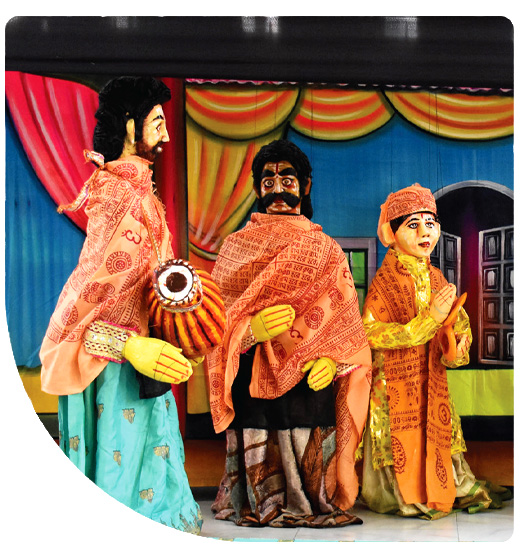
Folk Theater
West Bengal's folk drama reflects the emotions and experiences of everyday life. Originating with the solo act 'pala,' it evolved into ensemble performances like Alkap, Chhau, and Jatra. Jatra, emerging in the 15th century, later transformed into proscenium theatre, overshadowing pala. Today, forms like Gambhira, Domni, and puppetry address societal issues satirically. String puppetry prevails, drawing from myths and modern Jatra themes. Santhal tribe showcases Chadar Badar, a unique puppetry tradition. Instruments like banam and khorkuto accompany performances.
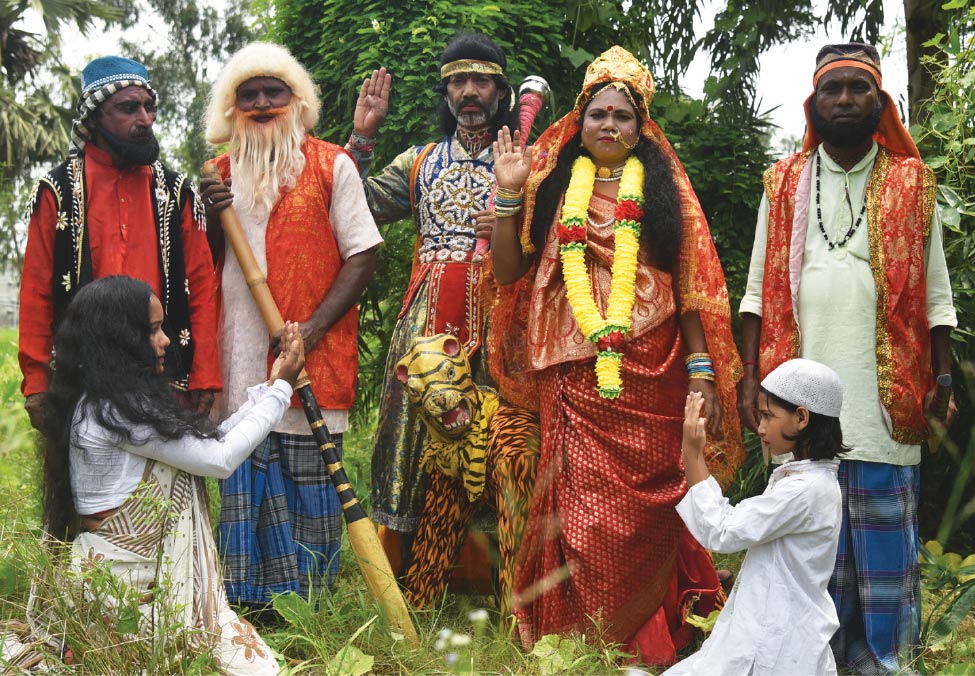
Banbibir Pala
Banbibi, an ancient folk drama in Sundarbans, West Bengal, involves around 370 artists and venerates a local deity known as the guardian of forest-dependent communities. Both Hindus and Muslims revere her for safe returns from forest endeavors. This syncretic tradition narrates Banbibi's rule over Sundarbans, highlighting her benevolence and ecological wisdom. The play reveres her while advocating for balanced resource allocation among locals. Elaborate performances blend colorful drama with Jhumur and Bhatiyali songs. Evolving as a tourist attraction, this theatre not only entertains but also preserves the region's cultural heritage and underscores the delicate harmony between humanity and nature.
Know moreBanbibir Pala Hubs
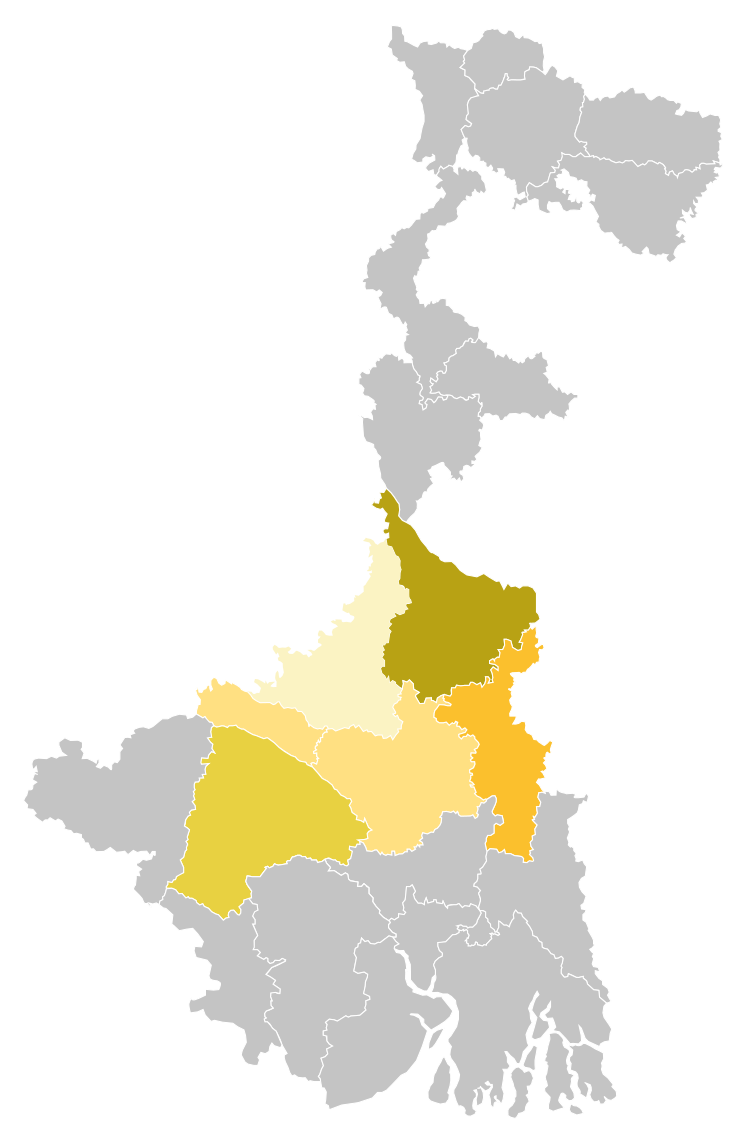
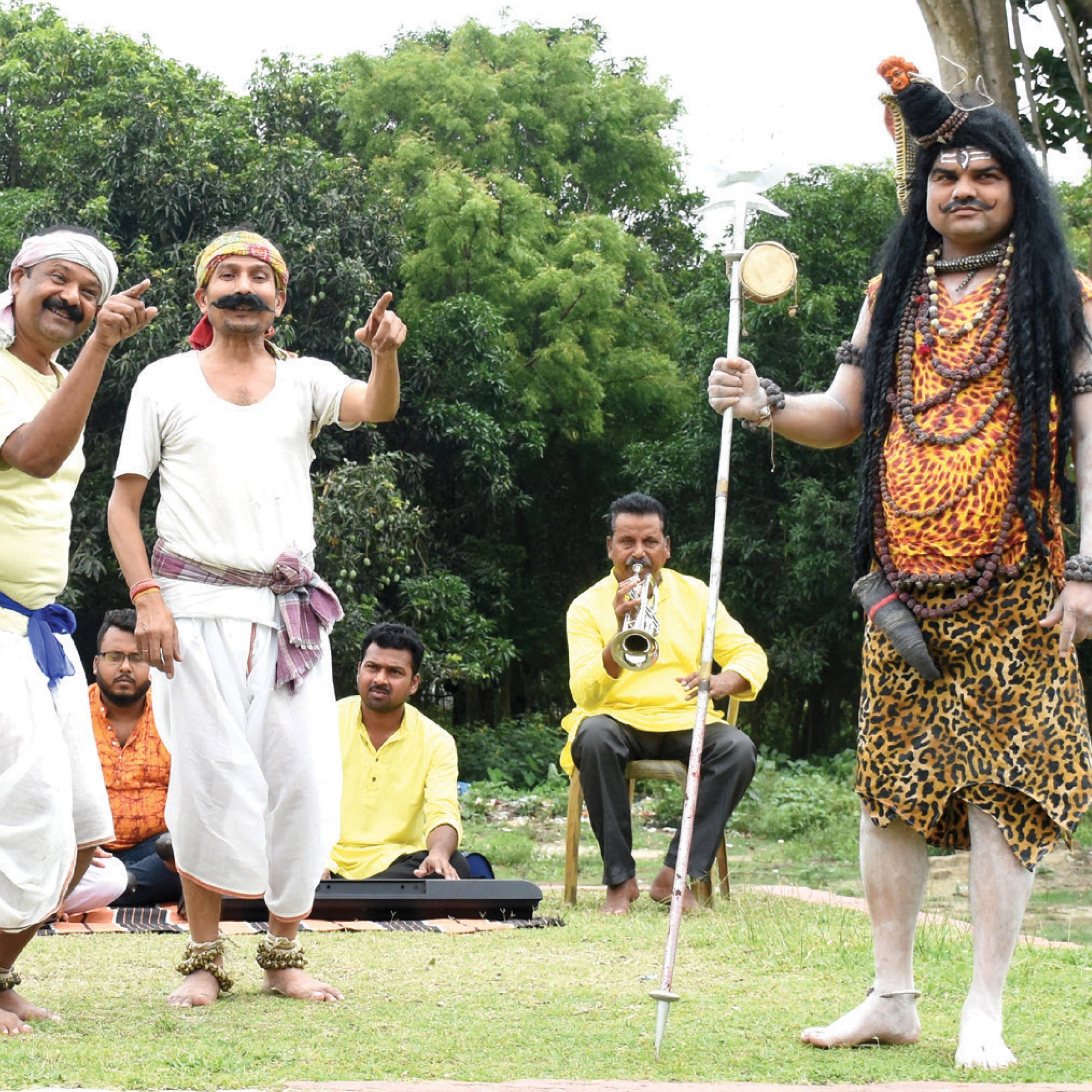
Gambhira
This a satirical folk theatre from West Bengal`s Malda district, thrives with around 290 dedicated artists. Originating post-Buddhism decline in the 7th-8th century and evolving under the Sen and Pala dynasties, it articulates commoners` joys, sorrows, and aspirations. The performance involves two artists: one resembling Lord Shiva and symbolizing authority, while the other amusingly communicates societal concerns through dance, song, and satire. Addressing social and political themes, Gambhira features characters in tattered attire using simple instruments like dhol, harmonium, tabla, trumpet, and cymbals. This dynamic art form resonates with the populace, reflecting their realities with humor and poignant storytelling.
Know moreGambhira Hubs
BIRBHUM
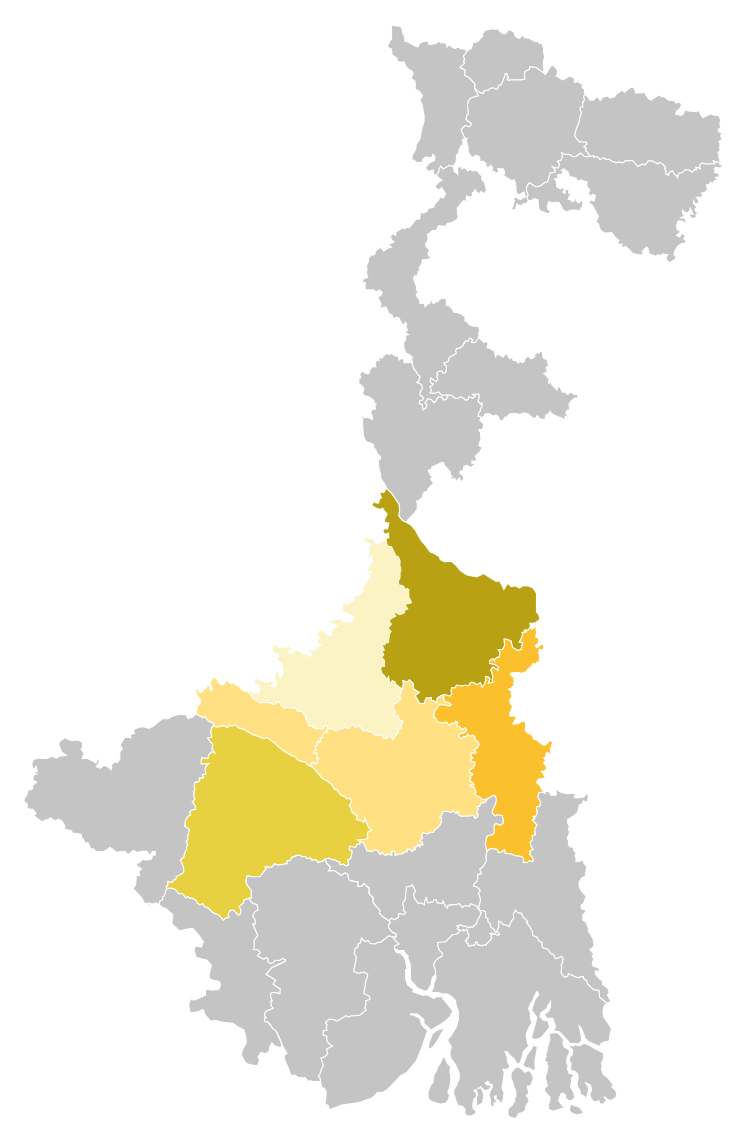
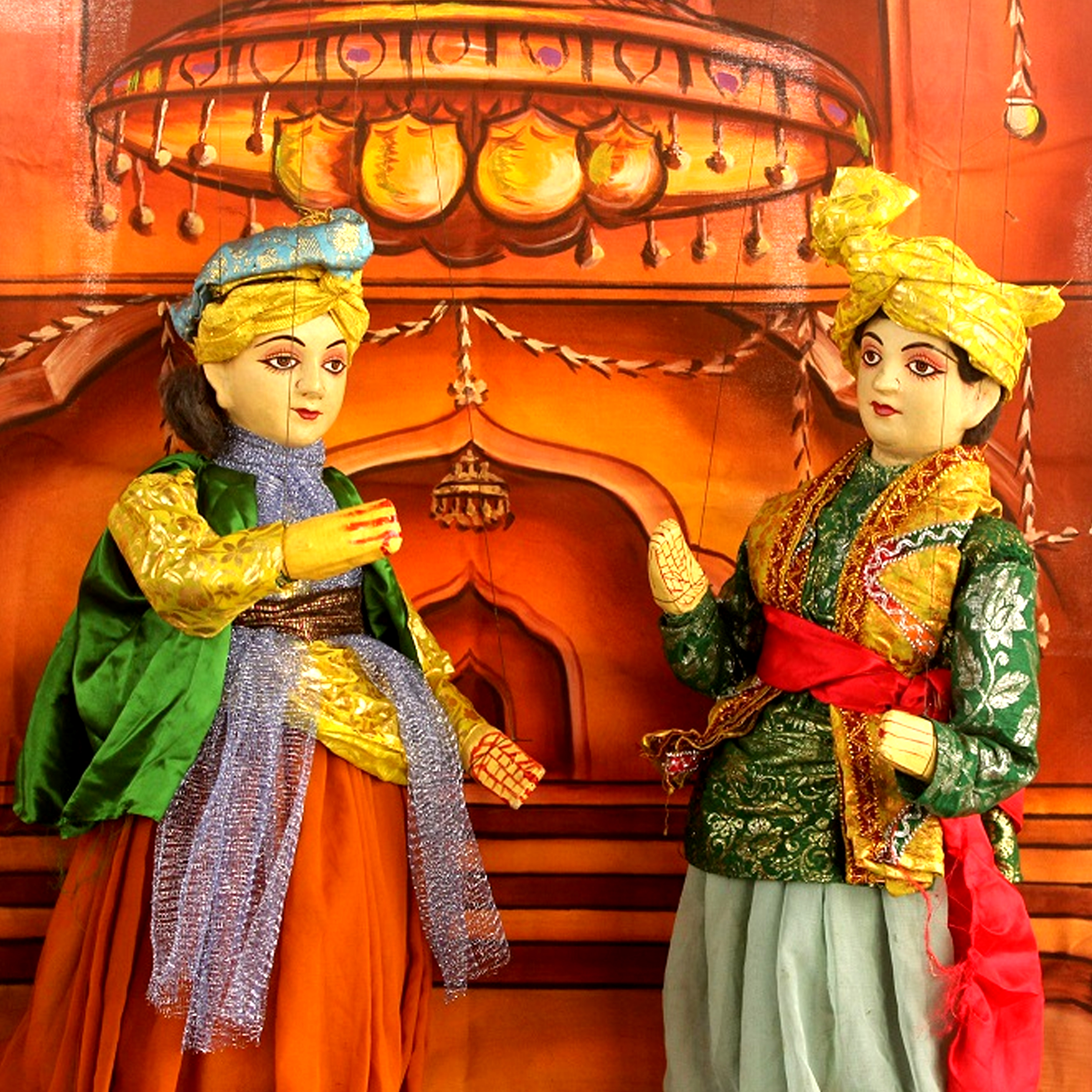
Puppetry Badar
Puppetry, an ancient folk art, thrives as traditional entertainment in West Bengal's village fairs. Reflecting myths, legends, and epics, it manifests in three distinct styles: Beni Putul (Glove puppetry), Dang Putul (Rod puppetry), and Taar Putul or Suto Putul (String puppetry). Crafted from clay, paper maché, wood, or Shola, these puppets don vibrant attire, embodying diverse characters. Revered by puppeteers, about 200 of whom practice professionally in hubs like Muragacha and Sonamukhi, these artisans move in troupes, earning their livelihood through this art form. Each puppeteer carries a sense of devotion, considering their craft and puppets sacred, preserving this cherished tradition.
Know morePuppetry Badar Hubs
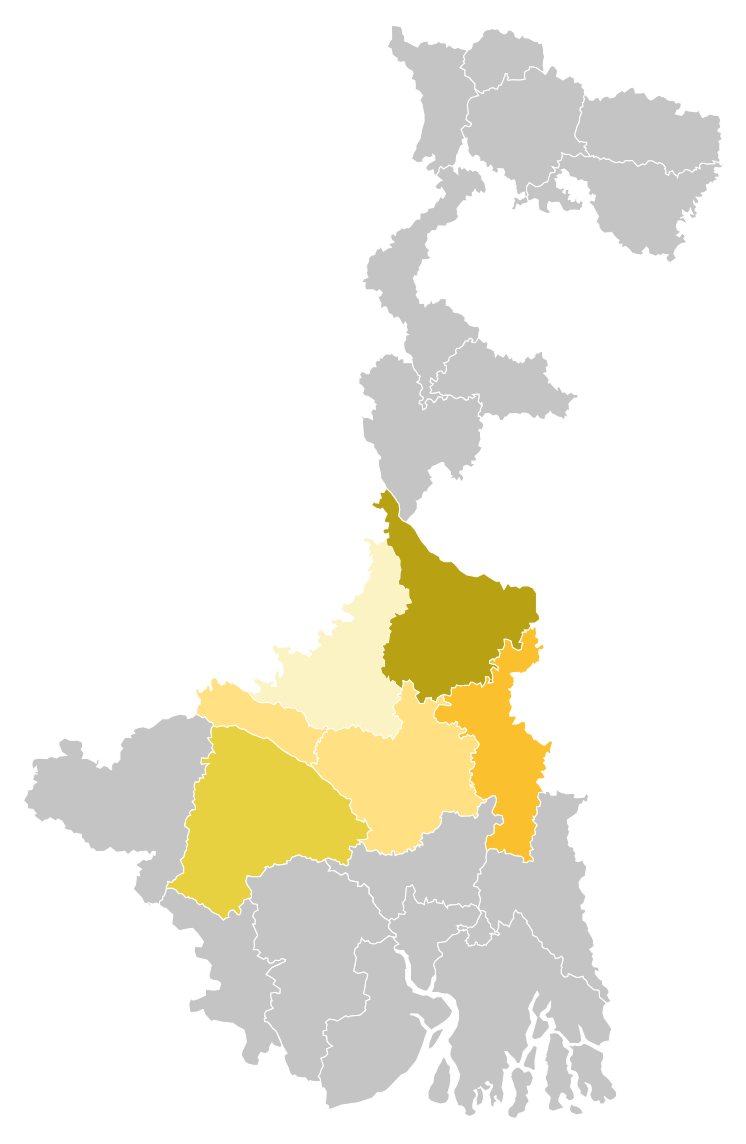
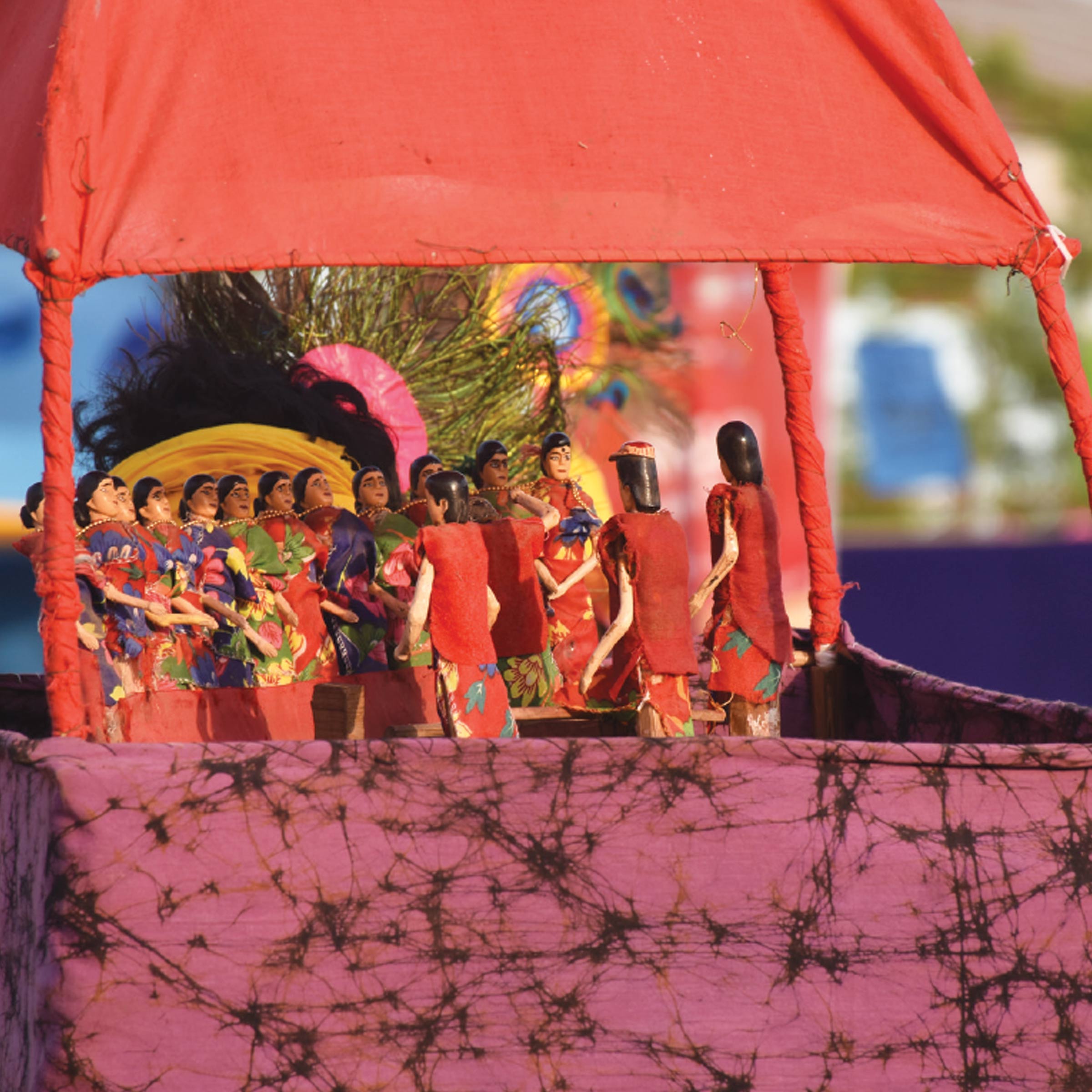
Chadar Badar
Chadar Badar, an indigenous Santhal puppetry, thrives in West Bengal's Purba Bardhaman and Dakshin Dinajpur districts. Over 70 artisans preserve this tradition, crafting intricate bamboo or wood puppets, standing 8 to 9 inches tall. Adorned with vibrant clothing, these puppets showcase exquisite craftsmanship. Manipulated by strings tied to the puppeteer's fingers, they perform stories from ancient Santhal culture, narrated in the Santhali language. These captivating tales unfold on small platforms with canopies or inside wooden boxes. Accompanied by traditional musical instruments like baje banam, lagara, tirenya, and tunda, Chadar Badar preserves and celebrates the rich heritage of the Santhal community.
Know moreChadar Badar Hubs
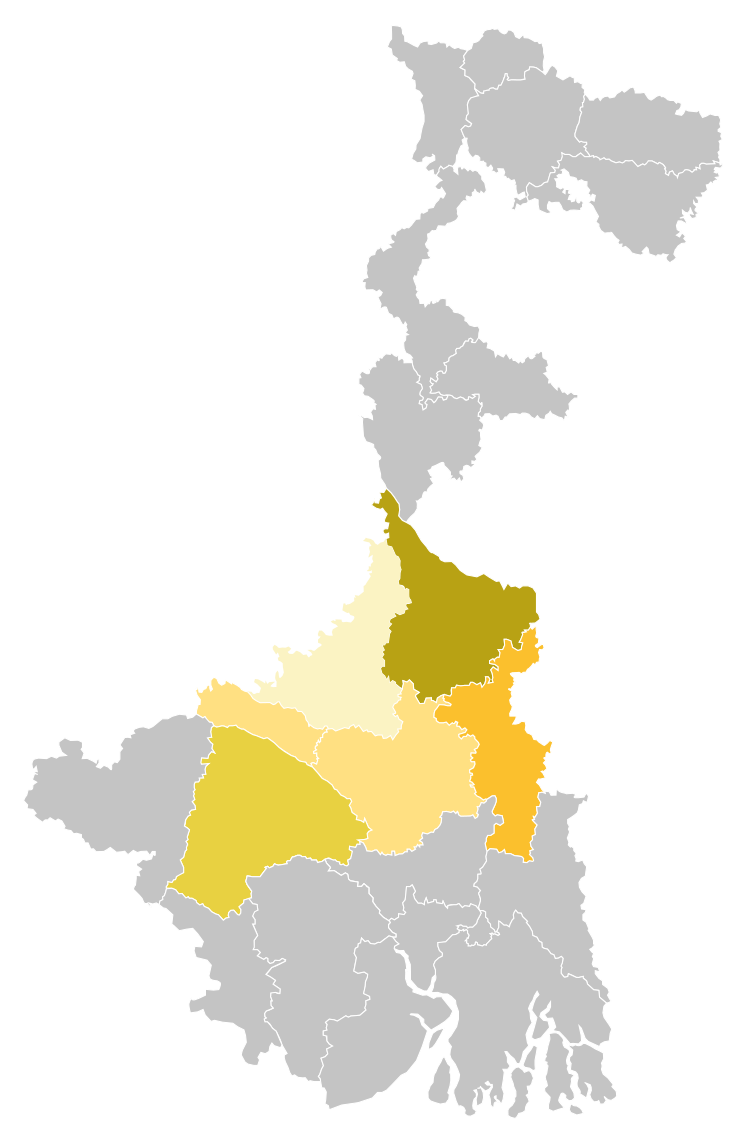

Domni
Domni is a unique folk theatre form of Malda region in West Bengal. It presents social satire through which common people voice their grievances and aspirations. The drama portrays the joys and sorrows of the poor and common people. The lead characters include husbands, wives, mothers, greedy moneylenders, peasants and political leaders, among others. Domni is said to have evolved from a region called Diyara in northwestern Malda and was practised by migrants from Jharkhand. This folk art form is presented in three acts. The first act is Bandana which starts with a tribute to gods and goddesses. The Mool Gayen (lead character or protagonist) and Chhokras (supporting characters) offer devotional prayers. Chhokras are men who dress up as and play the female characters. The dance performances of Chhokras are called Nachari or Lahari. The main body of the performance comes after this. Traditionally, the performance lasted up to 4 hours but now, keeping the audiences in mind, the duration has come down to around 90 minutes. The performance is accompanied by musical instruments like harmonium, trumpet, keyboard and percussions like dhol, khol, tabla and cymbals. The performing groups use scripts for the shows. In this project 142 Domni artists from Malda have participated.
Know more